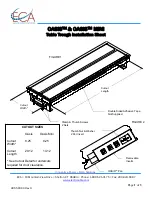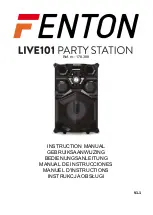
Engine Removal and Installation
Removing the Engine
1. Put machine on a level surface, stop engine, remove
key from ignition switch and engage parking brake.
2. Remove intake hose from air cleaner and carburetor.
3. Remove transmission drive coupling (see Chapter 10
- Transmission Coupler and PTO).
4. Remove PTO belt (see Chapter 10 - Transmission
Coupler and PTO).
5. Disconnect battery cables from battery terminals.
6. Disconnect and tag all wires connected to engine and
engine accessories.
7. Put a drain pan under radiator, loosen radiator cap,
loosen radiator petcock and allow radiator to drain com-
pletely.
8. Move drain pan under lower radiator hose. Discon-
nect hose from radiator and allow coolant to drain into
pan. Remove lower and upper radiator hoses.
9. Move drain pan under rear of engine and remove
cylinder block plug (located above starter) to drain cool-
ant from cylinder block. Install cylinder block plug.
10. Remove cable tie securing control cables and
vacuum sensor hose near caburetor.
11. Disconnect vacuum sensor hose from fuel trap on
carbruetor.
12. Disconnect choke control cable from carburetor.
13. Disconnect throttle control cable from governor.
14. Remove fuel line from inlet side of fuel pump.
NOTE: Be prepared to insert a plug into fuel line to
prevent fuel spill.
15. Remove capscrews securing fan shroud to radiator
so fan shroud can be move during engine removal for
cooling fan clearance.
16. Attach a short section of chain between the two lifting
shakles on the engine. Attach block and tackle or hoist
chain to this short section of chain, approximately mid-
way between the two shakles.
17. Remove four bolts securing rear engine mount to
frame.
18. Remove slack from lifting chain and carefully re-
move two capscrews which pass through the two rubber
front engine mounts.
19. Lift and guide engine from engine compartment. Be
careful not to damage the radiator cooling fan or other
components during removal.
Installing the Engine
1. Do steps 2 - 19 of “Removing the Engine” in reverse
order.
2. Fill cooling system with new coolant. Install a new oil
filter and fill engine with correct oil.
3. Inspect for oil and coolant leaks.
4. Check engine idle speed and maximum governed
speed settings.
Groundsmaster
®
300 Series
Page 3 - 7
Repairs
Summary of Contents for Groundsmaster 328-D
Page 2: ......
Page 12: ...Torque Specifications Page 2 4 Rev A Groundsmaster 300 Series ...
Page 44: ...Troubleshooting Page 4 16 Groundsmaster 300 Series ...
Page 45: ...Groundsmaster 300 Series Page 4 17 Troubleshooting ...
Page 171: ...Groundsmaster 300 Series Page 6 25 Testing ...
Page 220: ...Repairs Page 7 24 Groundsmaster 300 Series ...
Page 320: ...Troubleshooting Troubleshooting Page 11 4 Groundsmaster 300 Series ...
Page 348: ...Troubleshooting Troubleshooting Page 12 4 Groundsmaster 300 Series ...
Page 379: ...Troubleshooting Groundsmaster 300 Series Page 13 3 Troubleshooting ...
Page 400: ...This page is blank ...
Page 401: ...This page is blank ...
















































